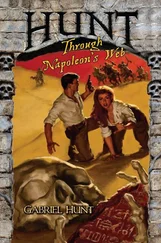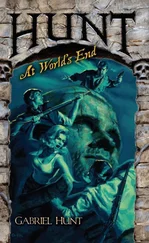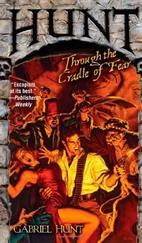Armand Cabasson - Wolf Hunt
Здесь есть возможность читать онлайн «Armand Cabasson - Wolf Hunt» весь текст электронной книги совершенно бесплатно (целиком полную версию без сокращений). В некоторых случаях можно слушать аудио, скачать через торрент в формате fb2 и присутствует краткое содержание. Год выпуска: 2012, Издательство: Gallic Books, Жанр: Старинная литература, на английском языке. Описание произведения, (предисловие) а так же отзывы посетителей доступны на портале библиотеки ЛибКат.
- Название:Wolf Hunt
- Автор:
- Издательство:Gallic Books
- Жанр:
- Год:2012
- ISBN:нет данных
- Рейтинг книги:5 / 5. Голосов: 1
-
Избранное:Добавить в избранное
- Отзывы:
-
Ваша оценка:
- 100
- 1
- 2
- 3
- 4
- 5
Wolf Hunt: краткое содержание, описание и аннотация
Предлагаем к чтению аннотацию, описание, краткое содержание или предисловие (зависит от того, что написал сам автор книги «Wolf Hunt»). Если вы не нашли необходимую информацию о книге — напишите в комментариях, мы постараемся отыскать её.
Wolf Hunt — читать онлайн бесплатно полную книгу (весь текст) целиком
Ниже представлен текст книги, разбитый по страницам. Система сохранения места последней прочитанной страницы, позволяет с удобством читать онлайн бесплатно книгу «Wolf Hunt», без необходимости каждый раз заново искать на чём Вы остановились. Поставьте закладку, и сможете в любой момент перейти на страницу, на которой закончили чтение.
Интервал:
Закладка:
As night fell, Bernadotte’s Saxons were still wandering about on the outskirts of the village of Deutsch-Wagram. Other Saxons, the grenadiers of the Leibgarde and the von Bose and von Edigy Battalions, were sent as reinforcements, but these infantrymen did not know exactly where their compatriots were. When they arrived in the village, the gloom and the smoke of combat added to the confusion. Soldiers in white coats appeared and the reinforcements opened fire. But they were firing on the other Saxons. While the Saxons were killing each other, the Austrians counterattacked and routed their assailants.
This first attempt at an attack therefore ended in abject failure. Archduke Charles did not take action to profit from this, however; it was too hazardous to continue fighting at night.
CHAPTER 31
DURING the night, plans were revised on both sides.
The Emperor still intended to attack the Austrian centre. Should he succeed, the enemy army would be annihilated. Napoleon wanted to achieve total victory to force Austria to surrender and to dissuade other countries from taking up arms against him. For that he had to weaken the enemy centre. He therefore chose to keep his left flank relatively fragile. It was very extended and only defended by Massena’s IV Corps. This weakness was in reality a trap. It was designed to entice the Archduke to attack on the French left. In this way Charles would be obliged to withdraw troops from his centre to reinforce the troops on his right charged with vanquishing the French left flank. In addition Davout was to overwhelm the Austrians on their left flank, to such an extent that other enemy regiments would also have to abandon the centre, to bolster this flank. And further, this French manoeuvre would prevent Archduke John’s forces from eventually joining his brother’s.
Napoleon would then launch his principal attack: a surge against the Austrian centre. The tactic of the weak flank had worked admirably at Austerlitz. But it was absolutely imperative that Masse-na hold firm on the left flank, which would be on the receiving end of a powerful Austrian attack.
However, Napoleon underestimated yet again the fighting spirit of the Austrians. He thought that Charles would limit himself to trying to break the French left. Against all expectation, the Austrian commander-in-chief opted for a widespread offensive. He not only decided to crush the left flank of the French with Kolowrat’s III Corps and Klenau’s VI Corps but he also ordered Rosenberg’s IV Corps to attack the French right flank while Bellegarde’s I Corps and Hohenzollern’s II Corps assailed the centre. The Liechtenstein reserve corps would launch the final onslaught.
On 6 July, at four in the morning, Rosenberg’s IV Corps flung itself on the French right flank constituted by Davout’s III Corps. Taken by surprise, Davout’s men began to fall back. Napoleon hurried to the area with Nansouty and d’Arrighi’s cuirassiers.
Meanwhile, Bellegarde’s I Corps took over the village of Aderklaa, which marked the angle between the French centre and its left flank. Bernadotte’s Saxon IX Corps, which had been severely tested by the previous evening’s panic, had evacuated the village. Marshal Bernadotte had considered that he would not be able to resist the Austrians and had withdrawn. Napoleon had never imagined losing Aderklaa to the Austrians; it was crucial to the success of his scheme. If the Grande Armée were to try to crush the Austrian centre with Aderklaa still in the hands of the enemy, the Austrian I Corps under Bellegarde would be free to come to offer support to the centre. In addition, the Archduke’s troops positioned on the right would be able to join the endangered centre much more rapidly, because they would not have to waste time skirting round the village. So Napoleon ordered Marshal Massena, ‘the golden boy’ known for his victories, to retake Aderklaa. But this meant that several of Massena’s regiments would no longer be available to protect the left flank, which would become even more fragile.
Margont was serving in the Legrand Division of Massena’s IV Corps. Three of Massena’s divisions had massed to the north-east of the left flank, very near the centre. The Boudet Division had been left three miles from there to constitute the south-west of the left flank, with only three thousand seven hundred men facing fourteen thousand soldiers of Klenau’s VI Corps, who were not yet moving from their positions.
The 18th of the Line stayed still, in battle order, under a lowering sky of massive clouds. Margont tried to work out what was planned. Thanks to the many plumes of white smoke and to the din of the cannon and the fusillades, he could tell that battle had commenced on the French right. He asked Lefine and Saber for their opinions. The former always knew everything and the latter had a particular talent for seeing through the plans of the general staff. Lefine, normally sanguine, showed increasing signs of anxiety. He kept readjusting his coat. His agitated fingers seemed to knit his worry.
‘We’re on the left wing! The wings are unlucky! At Austerlitz, don’t you remember? Our right flank was destroyed! The Emperor adores offering up a flank, it’s well known.’
Saber also seemed put out.
There’s a better chance of promotion in the centre than on the wings. How much longer am I going to languish in the role of subaltern? For pity’s sake, if they would only give me a regiment, you would see what I am capable of! But no, here we are on the edge of the “Route to Glory”! What terrible luck!’
‘There’s something I can’t grasp,’ said Margont worriedly. ‘If we're to the north-east of the left wing ... who exactly is the left wing?’ ‘Boudet,’ replied Saber.
Margont, Lefine and Piquebois looked at him in consternation. ‘Surely there must be other divisions ...’ said Lefine.
When they looked towards the south-west they could indeed only see Boudet’s division, a minuscule dark blue rectangle surrounded by the immense golden blanket of ripe corn that no peasant had come to harvest. Whereas looking towards the centre, they could make out a stupefying conglomeration of troops. The regiments were stacked one against the other. Column succeeded column, blue rectangle succeeded blue rectangle, lines of cuirassiers glinted in the sun, batteries were positioning themselves ... Compared to these masses, Boudet’s division appeared derisory, a little stone fallen by accident from Napoleon’s pocket. ‘It’s bait designed to attract a very large Austrian fish,’ explained Saber. ‘But if the fish is hungry and if he struggles, he will swallow everything ...’
Should Boudet’s division get into difficulties, there was every chance that the Legrand Division, the closest unit, would be sent to help them out. Margont realised that after having been unwitting bait in Relmyer’s trap, he now found himself bait once again, this time in Napoleon’s trap ...
Massena was being carried in a barouche, having been injured a few days earlier in a fall from his horse. His carriage, pulled by four white horses, attracted round shot that missed the marshal but felled the members of his general staff one by one. Massena had come to supervise the assault on the village of Aderklaa. He launched the Carra Saint-Cyr Division, which did indeed succeed in taking over the village. Bernadotte’s Saxons supported it on the right. But the soldiers of Carra Saint-Cyr, galvanised by their success, passed on from Aderklaa and flung themselves on Belle-garde’s Austrians, whereupon they were decimated by horrifying fire power. Archduke Charles arrived to lead a counterattack and the Austrians retook the village. The Saxons were in the process of withdrawing when the enemy light cavalry charged them. Under the nose of the appalled Marshal Bernadotte, the majority of IX Saxon Corps disintegrated into a mass of fleeing men. Napoleon, who had hurried to the right flank to try to avert disaster, crossed the battlefield in the opposite direction, trying to rally the fleeing and demoralised Saxons.
Читать дальшеИнтервал:
Закладка:
Похожие книги на «Wolf Hunt»
Представляем Вашему вниманию похожие книги на «Wolf Hunt» списком для выбора. Мы отобрали схожую по названию и смыслу литературу в надежде предоставить читателям больше вариантов отыскать новые, интересные, ещё непрочитанные произведения.
Обсуждение, отзывы о книге «Wolf Hunt» и просто собственные мнения читателей. Оставьте ваши комментарии, напишите, что Вы думаете о произведении, его смысле или главных героях. Укажите что конкретно понравилось, а что нет, и почему Вы так считаете.











